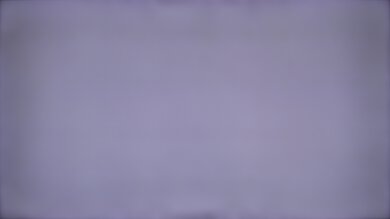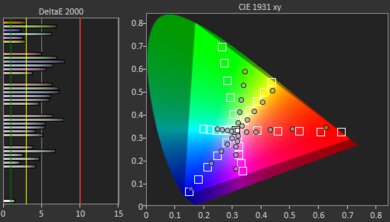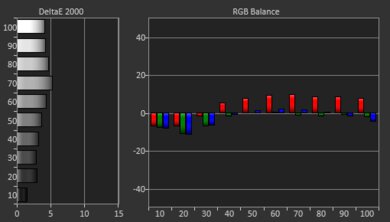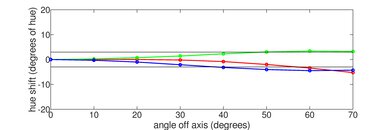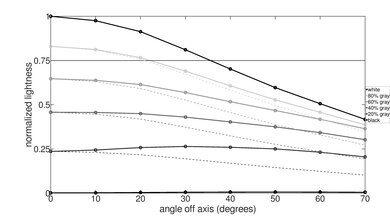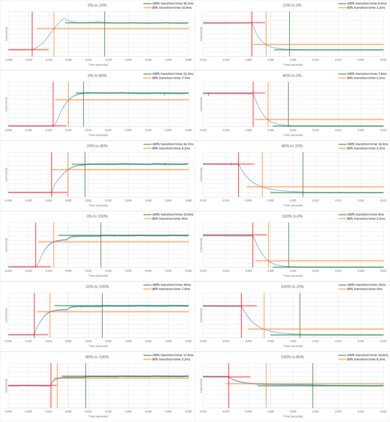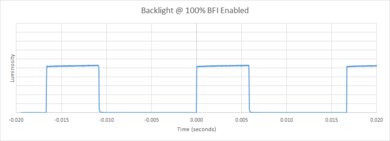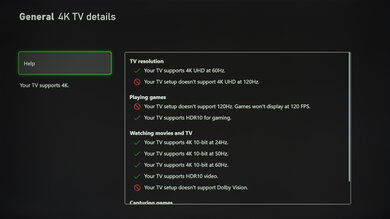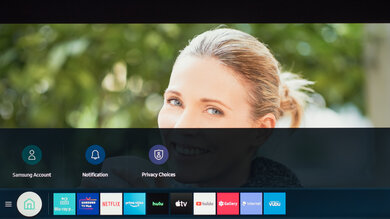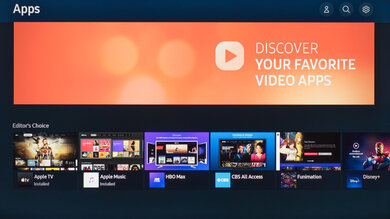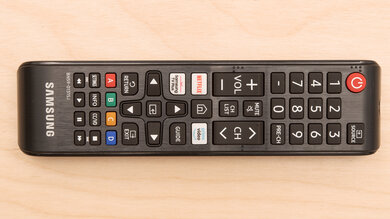The Samsung TU7000 is an entry-level, budget 4k TV, sitting at the bottom of Samsung's 2020 4k TV lineup. It replaces the Samsung RU7100, and its competitors are the Vizio V Series 2020, the Sony X750H, and the LG UN7300. Like most entry-level Samsung TVs, it's no longer widely available in North America and is mainly sold as one of its many variants, including the Samsung TU700D at Costco and Sam's Club, during big sales like Black Friday. As an entry-level TV, it doesn't support any advanced gaming features, like HDMI 2.1 bandwidth or variable refresh rate technology, but it supports HDR10 and HDR10+.
Our Verdict
The Samsung TU7000 is okay for most uses. It doesn't perform well in bright environments, but it has decent contrast and outstanding black uniformity that makes blacks look deep and uniform, so it's best suited for watching movies in the dark. Its narrow viewing angle is not well suited for watching TV or sports with friends since the image degrades from the side. It has remarkably low input lag for a responsive gaming experience, and sadly, it doesn't have extra features like VRR to reduce screen tearing. Also, its response time is slow.
- Outstanding black uniformity.
- Decent contrast.
- No local dimming.
- Low SDR and HDR peak brightness.
- No VRR support.
The Samsung TU7000 is mediocre for watching TV shows. It has alright reflection handling, but unfortunately, it doesn't get bright enough to overcome glare in well-lit rooms, so visibility is an issue. It also has a disappointing viewing angle, so it's not a good choice for a wide seating arrangement, as the image degrades when you move to the sides. On the upside, it can upscale lower-resolution content, like cable TV, without issues, and it has a huge selection of streaming apps to choose from.
- Decent contrast.
- Upscales lower resolution content without issue.
- Low SDR and HDR peak brightness.
- Narrow viewing angle.
The Samsung TU7000 is a mediocre TV for watching sports. It doesn't get bright enough to overcome glare in a well-lit room, so it's best suited for dark to moderately lit rooms. The TV has a fair response time, but there is still noticeable motion blur with quick-moving players and objects. It upscales lower-resolution content well, which is great, as many cable sports channels still broadcast low-resolution signals. Unfortunately, it has a narrow viewing angle, so it's not ideal for watching the game with a group since the image degrades when you move to the sides, so only those sitting directly in front enjoy the best image.
- Decent contrast.
- Low SDR and HDR peak brightness.
- Narrow viewing angle.
The Samsung TU7000 delivers a decent gaming experience overall. It has remarkably low input lag, ensuring a responsive gaming experience with little delay between your actions and the on-screen action. However, there's still some image duplication during fast-moving scenes because of the backlight flicker. On the upside, it has a decent contrast ratio, which is great if you prefer gaming in the dark. Unfortunately, it doesn't support any advanced gaming features, like VRR or HDMI 2.1 bandwidth, and it's limited to a 60Hz refresh rate, so it's not a good choice to pair with modern gaming consoles. It also has a fairly slow response time, resulting in noticeable blur behind fast-moving objects.
- Low input lag.
- Outstanding black uniformity.
- Decent contrast.
- Low SDR and HDR peak brightness.
- No VRR support.
The Samsung TU7000 is unremarkable for watching HDR movies. It has a decent contrast ratio and outstanding black uniformity, which helps with dark room performance as there's no distracting blooming around bright objects. There's also very little black crush, so fine details in dark scenes are preserved well. Unfortunately, the TV has a limited color gamut, inadequate color volume, and bad HDR brightness, so colors lack vibrancy and realism, and highlights don't stand out the way they should with HDR content.
- Outstanding black uniformity.
- Decent contrast.
- Very little black crush.
- No local dimming.
- Low SDR and HDR peak brightness.
The Samsung TU7000 is decent for HDR gaming but mainly because of its gaming performance. It provides a responsive gaming experience thanks to its low input lag, although the response time is only fair, so there's a bit more blur behind fast-moving objects than on higher-end TVs. However, it doesn't provide a satisfying HDR experience because it can't get bright enough to make highlights pop, and colors look dull and muted due to its low peak brightness and limited color gamut.
- Low input lag.
- Outstanding black uniformity.
- Decent contrast.
- No local dimming.
- Low SDR and HDR peak brightness.
- No VRR support.
The Samsung TU7000 is an alright TV for use as a PC monitor. It has remarkably low input lag, which means your inputs are translated to the screen without delay. The TV has a fair response time, but there is noticeable motion blur behind quick cursor movements. It displays chroma 4:4:4 properly, ensuring that the text looks sharp and is easy to read. Unfortunately, it has a narrow viewing angle, so the image looks washed out at the edges if you sit close to the screen.
- Low input lag.
- Decent contrast.
- Displays proper chroma 4:4:4.
- Low SDR and HDR peak brightness.
- Narrow viewing angle.
- No VRR support.
Changelog
-
Updated Oct 01, 2025:
We updated the results and the text in the Audio Passthrough section after confirming that the TV doesn't support any DTS formats.
- Updated Sep 26, 2025: We uploaded the latest brightness measurements and uniformity photos for the Accelerated Longevity Test.
- Updated Jul 08, 2025: We uploaded the latest brightness measurements and uniformity photos for the Accelerated Longevity Test.
- Updated Apr 17, 2025: We uploaded the latest brightness measurements and uniformity photos for the Accelerated Longevity Test.
Check Price
Differences Between Sizes And Variants
We tested the 55" (UN55TU7000FXZA) variant of the Samsung 7 Series, and our review is also valid for the other sizes, which are listed below. A lot of variants of this TV exist, including the Samsung TU700D, which is a variant sold at Costco and Sam's Club, and the Samsung TU690T. There's a TU7100 variant in the UK, which is available from 43 to 75 inches, and it seems the only difference compared to the TU7000 is that the color of the back panel is gray. A Black Friday model is also sold as the 6 Series (UN70TU6980FXZA/UN82TU6980FXZA), and it's available in 70-inch and 82-inch sizes.
Note that with Samsung TVs, the four letters after the short model code (FXZA in this case) can vary between regions and even between different retailers. We expect them all to perform about the same, but there may be some minor differences between them, including the tuners included.
| Size | US Model | Short Model Code |
|---|---|---|
| 43" | UN43TU7000FXZA | UN43TU7000 |
| 50" | UN50TU7000FXZA | UN50TU7000 |
| 55" | UN55TU7000FXZA | UN55TU7000 |
| 58" | UN58TU7000FXZA | UN58TU7000 |
| 60" | UN60TU7000FXZA | UN60TU7000 |
| 65" | UN65TU7000FXZA | UN65TU7000 |
| 70" | UN70TU7000FXZA | UN70TU7000 |
| 75" | UN75TU7000FXZA | UN75TU7000 |
| 82" | UN82TU7000FXZA | UN82TU7000 |
| 85" | UN85TU7000FXZA | UN85TU7000 |
Our unit was manufactured in May 2020; you can see the label here.
Popular TV Comparisons
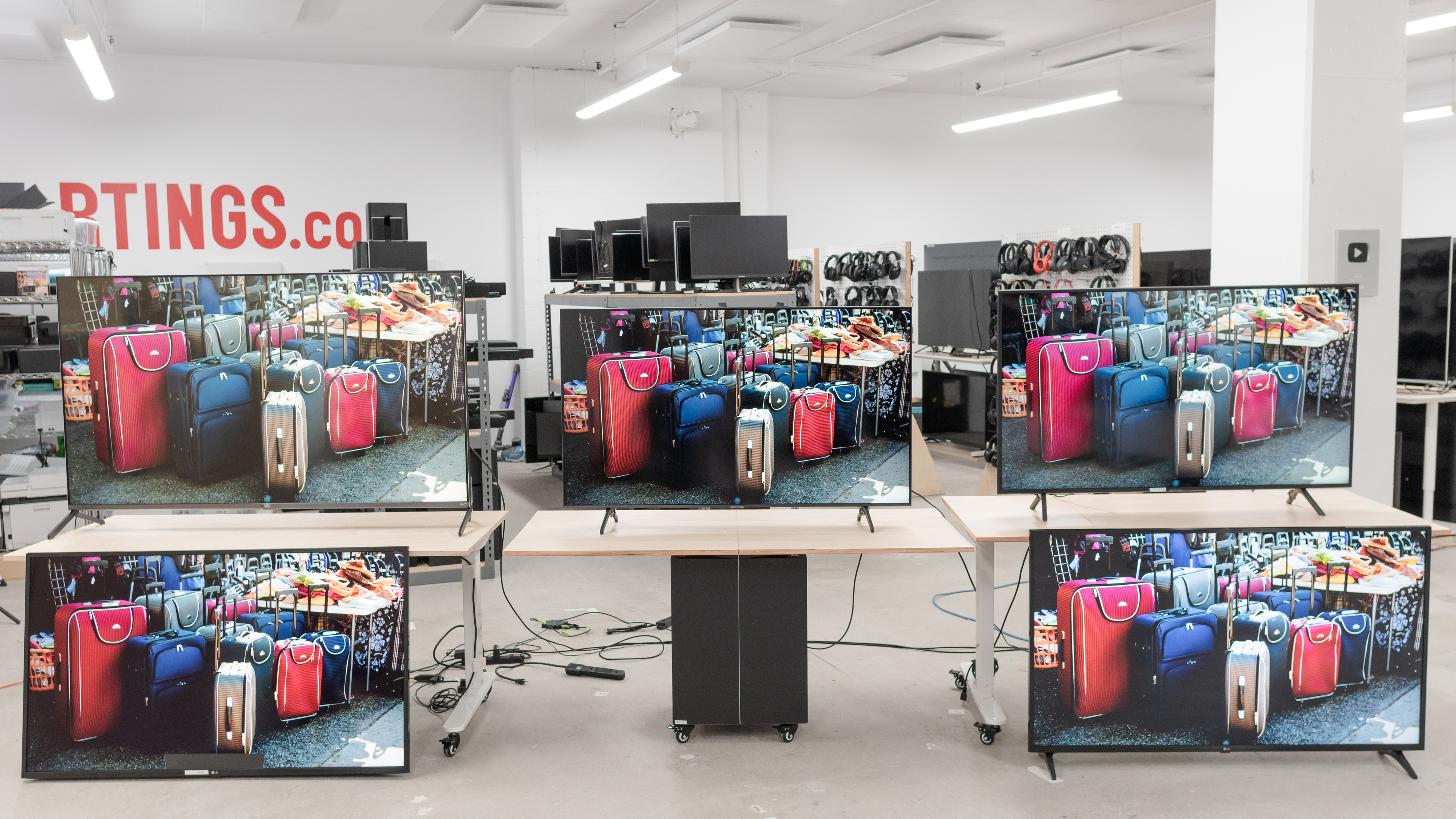
The Samsung TU7000 is an entry-level budget TV with okay performance. It performs very similarly to its predecessor, the Samsung RU7100, but the TU7000 has a few minor improvements, like a slightly better response time and lower input lag. It's a very basic TV with limited picture quality and few extra features, and even when you can find it on sale, it's usually not worth it. Better budget models, like the Hisense U6/U6K, are available from other budget brands.
For other options, check out our recommendations for the best TVs, the best budget TVs, and the best 4k gaming TVs.
The Samsung TU8000 performs a bit better overall than the Samsung TU7000. It has a slightly higher contrast ratio, gets a little brighter, and can remove 24p judder from any source, unlike the TU7000, which can't remove any judder. The only area where the TU7000 significantly outperforms the TU8000 is gradient handling, as it has much less banding.
The Samsung CU7000/CU7000D and Samsung TU7000 are very similar TVs. The TU7000 has better contrast and color accuracy, while the CU7000 has slightly better peak brightness in both SDR and HDR, much better PQ EOTF tracking, and a faster response time. The CU7000's response time makes it the better choice for fast-moving action in games and sports; however, the slower response time of the TU7000 makes it better suited for watching movies as it has less stutter.
The Samsung AU8000 is a bit better overall than the Samsung TU7000. They have similar features, but the AU8000 is better in a few areas. The AU8000 gets brighter and has better reflection handling, so it's a better choice for well-lit rooms. It also has an upgraded version of Tizen OS, which feels smoother to use, and it comes with a mic for voice control in the remote, which the TU7000 doesn't have. On the other hand, the TU7000 supports 1440p, which the TU8000 doesn't.
The Samsung TU7000 and the Samsung NU6900 perform very similarly overall. The NU6900 gets a little brighter, but the TU7000 has a significantly lower input lag, making it a better option if you plan on using your TV for video games.

We buy and test dozens of TVs yearly, taking an objective, data-driven approach to deliver results you can trust. Our testing process is complex, with hundreds of individual tests that take over a week to complete. Most of our tests are done with specially designed test patterns that mimic real content, but we also use the same sources you have at home to ensure our results match the real-world experience. We use two main tools for our testing: a Colorimetry Research CR-100 colorimeter and a CR-250 spectroradiometer.
Test Results

After running on our accelerated longevity test for twelve months, this TV shows no signs of degradation and the brightness has remained roughly the same. The sides of the screen are significantly darker than the center, but this isn't caused by the longevity test and was present when we originally tested the TV.
The back of the Samsung UN55TU7000 is plastic and has the same etched horizontal texture as other recent Samsung TVs, like the Samsung TU8000. The inputs are side-facing and set into the back of the TV, so they're tough to access when the TV is mounted on the wall. Tracks are on the back of the TV for cable management, and clips are on the feet to hold them in place.
This TV doesn't have a local dimming feature. The entire backlight is always on at the same intensity, so there's no distracting flicker or brightness changes as bright highlights move across the screen.
Unfortunately, the Samsung TU7000 2020 has bad peak brightness in HDR. Small highlights don't stand out at all, and it doesn't deliver anything close to a proper HDR experience.
These measurements are after calibrating the HDR white point with the following settings:
- HDR Picture Mode: Movie (HDR)
- Brightness: Max
- Contrast: Max
- ST. 2084: 0
A very slight difference in HDR peak brightness exists when in Game Mode. Most scenes are slightly brighter than outside of Game Mode, but the difference is so minor that it's not noticeable.
The Samsung TU7000 2020 has decent PQ EOTF tracking. Blacks are slightly raised, but outside of that, content is displayed darker than intended. It tone maps well near the TV's peak brightness, resulting in a slow roll-off with no loss of fine details in bright scenes.
This TV has sub-par peak brightness in SDR. It's best suited for a dark to moderately lit room, as it doesn't get bright enough to overcome glare in well-lit environments. There's very little variation in brightness with different content, except for the 2% window, which is dimmer due to the TV's frame dimming. If you want something that gets brighter, check out the Hisense U6/U6K.
These measurements are after calibration with the following settings:
- Picture Mode: Movie
- Brightness: Max
- Contrast: Default
- Gamma: 2.2
The TV has an adequate color gamut. A wide color gamut is important for saturated, vibrant colors in HDR, but sadly, this TV can't display a wide color gamut. It has decent coverage of the DCI P3 color space used by most current HDR content, but its coverage of the wider Rec. 2020 color space is poor.
The Samsung 7 Series has inadequate color volume. It's mostly limited by the lack of a wide color gamut, but it displays dark colors well. Like almost all LCDs on the market, blues aren't as bright as pure white or most other colors, but this isn't very noticeable with regular content.
This TV has decent accuracy before calibration. Most colors and shades of gray are slightly inaccurate, and the warm color temperature results in a red/yellow tint. Gamma follows the 2.2 target fairly well, but dark scenes are too dark, and other scenes are slightly over-brightened. The Samsung TU690T variant of this model is far more accurate out of the box. If you don't plan on calibrating your TV and want better color accuracy, check out the Hisense U6/U6K instead.
After calibration, the color accuracy is outstanding. Some inaccuracies still exist with reds and blues, and dark scenes are still too dark, but outside of that, the white balance and gamma are nearly perfect. The color temperature is much closer to our target of 6500K.
You can see our recommended settings here.
Unfortunately, the Samsung TU7000 2020 has a narrow viewing angle. The image quickly loses accuracy and washes out as you move off-center, so it's not a good choice for a wide seating arrangement. If you want a similar TV with a better viewing angle, the LG UP8000 is a better choice overall.
This TV has just alright reflection handling. It's not very bright, either, so it looks best in a moderately lit or dark room. It's best to avoid placing it in direct sunlight or opposite a bright source of light.
The TV's HDR gradient handling is alright. There's significant banding in dark grays and noticeable banding in greens, dark reds, and dark blues.
The TV has poor low-quality content smoothing. Details are preserved well, but there's very little smoothing done that is causing noticeable macro-blocking. If you want a similar budget model with better processing, check out the Samsung CU8000 or the LG UR8000.
This TV uses a BGR subpixel layout instead of the traditional RGB layout. For video content, it doesn't cause any issues, but if you're planning on using this TV as a PC monitor, it impacts text clarity with some text looking blurry. You can read more about this here.
Unfortunately, this TV has a fairly slow response time, so it's not ideal for fast-paced action or gaming. This results in a more noticeable blur behind fast-moving objects. Like most VA panels, dark scenes have significantly slower response times, causing a black smearing behind dark objects. Unfortunately, this TV's backlight flicker causes duplications in motion. If you want a TV with better motion handling, consider the Vizio V Series 2022.
The TV uses pulse width modulation to dim its backlight. It flickers at 120Hz in all modes unless you set the Brightness to its max in the Game or Movie Picture Mode, at which point it becomes flicker-free. It's also flicker-free if you're in PC mode with the Picture Mode set to Dynamic and Brightness at its max. Since the flicker rate is slow, it will bother people who are sensitive to it. The Samsung TU7000's successor, the Samsung CU7000/CU7000D, is much better in this regard, so check it out if flicker bothers you.
The Samsung TU7000 2020 has a backlight strobing feature, commonly known as black frame insertion, to help improve the appearance of motion, but it doesn't perform well. The backlight flickers at 60Hz when LED Clear Motion is enabled, but the bad crosstalk results in visible image duplication. It always flickers at 120Hz in Game Mode with the backlight set to any level below its maximum, and once again, image duplication is noticeable due to the TV's 60Hz refresh rate.
This TV can interpolate lower frame rate content up to 60fps. It looks bad on our test pattern because of the backlight's 120Hz flicker; however, it's not as distracting in regular content. Some minor artifacts remain, but it works well overall with most content.
Thanks to this TV's relatively slow response time, it has very little stutter when watching movies or other low frame rate content.
Unfortunately, this TV can't remove judder from any source, which is surprising as the Samsung TU690T variant can. If you want a TV that does, consider the newer Samsung CU7000/CU7000D.
Unfortunately, the Samsung TU700D doesn't support any variable refresh rate technologies and has a limited 60Hz refresh rate. For better gaming performance, check out the Hisense U6/U6K.
This TV has remarkably low input lag. It's extremely low when in Game Mode and only slightly higher outside of Game Mode. To get the lowest input lag when using a PC, the input in use must be labeled 'PC', and you must be in Game Mode.
This TV supports most common resolutions and can display proper chroma 4:4:4 at all supported resolutions, which helps with text clarity when using the TV as a PC monitor.
Since this TV doesn't support any advanced gaming features, it can't take full advantage of the PS5. The Auto Low Latency Mode triggers Game Mode when the TV detects that you've launched a game from a compatible device.
As this TV doesn't support any advanced gaming features, it can't take full advantage of the Xbox Series S|X. The Auto Low Latency Mode triggers Game Mode when the TV detects that you've launched a game from a compatible device.
Unfortunately, this TV has limited connectivity. With no component or composite inputs, users with older devices need to use an external HDMI converter to use them with this TV.
Even though it doesn't have an HDMI 2.1 input, this TV has eARC support, which is a nice addition to an entry-level TV. This lets you send high-quality audio to a compatible receiver using an HDMI connection. The TV supports a wide variety of Dolby audio formats, but it doesn't support any DTS audio formats commonly found on physical media.
This TV has a decent frequency response. It's well-balanced overall, but like most TVs, it doesn't produce much bass. It doesn't get that loud either, so it's better suited for small and quiet environments.
The distortion performance is okay. It sounds fairly clean at moderate volume levels, but it does distort a bit at max volume. Surprisingly, less distortion occurs in the higher frequencies when playing at max volume than at a moderate volume level.
Like all other Samsung TVs, the Samsung TU7000FXZA runs on Samsung's proprietary Tizen OS. As an entry-level model with a slower processor, Samsung has reduced the number of animations in the OS to improve overall performance. The interface is well-organized and easy to use.
The remote control is similar to previous entry-level models, with a few minor tweaks. Shortcuts to streaming services have been added, but otherwise, it remains unchanged, and there's no voice control.


